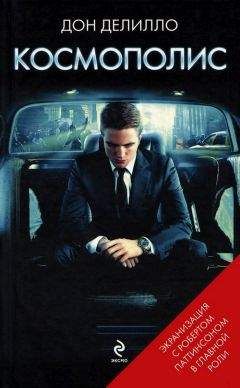Джона Лерер - Как мы принимаем решения

Помощь проекту
Как мы принимаем решения читать книгу онлайн
Darwin, Charles. The Expression of the Emotions m Man and Animals. New York: Oxford University Press, 1998. First published in London by John Murray, 1872.
Davidson, Janet, and Robert Sternberg, eds. The Psychology of Problem Solving. New York: Cambridge University Press, 2003.
Dayan, Peter, and L. F. Abbot. Theoretical Neuroscience. Cambridge: MIT Press, 2001.
Dayan, Peter, S. Kakade, and P R. Montague. Learning and Selective Attention. Nature Neuroscience 3 (2000): 1218—23.
Deeley, Quinton, et al. Facial Emotion Processing m Criminal Psychopathy. British Journal of Psychiatry 189 (2006): 533—39. de Martino, Benedetto, Dharshan Kumaran, Ben Seymour, and Raymond J. Dolan. Frames, Biases and Rational Decision-Making m the Human Bram. Science 313 (2006): 684—87.
Deyo, Richard, A. Nachemson, and S. K. Mirza. Spmal-Fusion Surgery: The Case for Restraint. New England Journal of Medicine 350
(2004): 722—26.
Dijksterhuis, Ap. Breakthrough Ideas. Harvard Business Review, February
2007.
Dijksterhuis, Ap, Rick B. van Baaren, Karin C. A. Bongers, Maarten Bos, Matthijs L. van Leeuwen, and Andries van der Leij. The Rational Unconscious: Conscious Thought versus Unconscious Thought m Complex Consumer Choice. Working paper.
Dijksterhuis, Ap, Maarten Bos, Loran Nordgren, and Rick van Baaren. On Making the Right Choice: The Dehberation-Without-Attention Effect. Science 311 (2006): 1005—07.
Dijksterhuis, Ap, and Ad van Knippenberg. The Relation Between Perception and Behavior, or How to Win a Game of Trivial Pursuit. Journal of Personality and Social Psychology 74 (1998): 865—77.
Dijksterhuis, Ap, and Loran Nordgren. A Theory of Unconscious Thought. Working paper.
Dijksterhuis, Ap, and Zeger van Olden. On the Benefits of Thinking Unconsciously: Unconscious Thought Can Increase Post-Choice Satisfaction. Journal of Experimental Social Psychology 42 (2006): 627—31.
Dolan, Ray, et al. Dopaminergic Modulation of Impaired Cognitive Activation in the Anterior Cingulate in Schizophrenia. Nature 378 (1995): 180—82.
Dougherty, Pete, and Jim Wyatt. Will Wonderlic Scores Cause Teams to Wonder about Youngf USA Today, March 1, 2006.
Dweck, Carol. Mindset. New York: Random House, 2006. Self-Theories. Philadelphia: Psychology Press, 2000.
Ekman, Paul. An Argument for Basic Emotions. Cognition and Emotion 6 (1992): 169–200.
El-Hai, Jack. The Lobotomist. New York: Wiley, 2007.
Fama, Eugene. Random Walks in Stock Market Prices. Financial Analysts Journal, September/October 1965 (reprinted January/February 1995).
Fehr, Ernst, and Klaus Schmidt. A Theory of Fairness, Competition, and Cooperation. Quarterly Journal of Economics 71 (1999): 397–404. Finlan, Alastair. The Royal Navy m the Falklands Conflict and the Gulf War. London: Routledge, 2004.
Fleck, Jessica, and Robert Weisberg. The Use of Verbal Protocols as Data: An Analysis of Insight in the Candle Problem. Memory and Cognition 32 (2004): 990—1006.
Fleming, Renee. The Inner Voice. New York: Viking, 2004.
Frank, Robert. Passions Within Reason. New York: Norton, 1988.
Freud, Sigmund. Civilization and Its Discontents. New York: Norton, 2005. New Introductory Lectures on Psychoanalysis. London: Hogarth Press, 1933. Gailliot, М. Т., R. Baumeister, C. N. DeWall, J. K. Maner, E. A. Plant, D.M. Tice, L. E. Brewer, and B. J. Schmeichel. Self-Control Relies on Glucose as a Limited Energy Source: Willpower Is More Than a Metaphor. Journal of Personality and Social Psychology 92 (2007): 325—36. Galvan, Adriana, Todd A. Hare, Cindy E. Parra, Jackie Penn, Henning Voss, Gary Glover, and B. J. Casey. Earlier Development of the Accumbens Relative to Orbitofrontal Cortex Might Underlie Risk-Taking Behavior in Adolescents. Journal of Neuroscience 25 (2006): 6885—92. Gaspar, P., ЕТ al. Catecholamine Innervation of the Human Cerebral Cortex as Revealed by Comparative Immunohistochemistry of Tyrosine Hydroxylase and Dopamine-?-hydroxylase. Journal of Comparative Neurology 279(198): 249—71.
Gazzaniga, Michael. The Social Brain. New York: Basic Books, 1985. Gazzaniga, Michael, ed. The New Cognitive Neurosciences. Cambridge: MIT Press, 2006.
Geier, Andrew, Paul Rozin, and Gheorghe Doros. Unit Bias: A New Heuristic that Helps Explain the Effect of Portion Size on Food Intake. Psychological Science 17 (2006): 521—27.
George, Carol, and Mary Main. Social Interactions of Young Abused Children. Child Development 50 (June 1979): 306—18.
Gigerenzer, Gerd. Gut Feelings. New York: Viking, 2007.
Gigerenzer, Gerd, and Reinhard Selten, eds. Bounded Rationality: The Adaptive Toolbox. Cambridge: MIT Press, 2000.
Gilbert, Daniel. Stumbling on Happiness. New York: Knopf, 2007. Gilovich, Thomas. How We Know What Isn't So: The Fallibility of Human Reason in Everyday Life. New York: Free Press, 1991.
Gilovich, Thomas, Robert Vallone, and Amos Tversky. The Hot Hand in Basketball: On the Misperception of Random Sequences. Cognitive Psychology 17 (1985): 295–314.
Gladwell, Malcolm. Blink. Boston: Little, Brown and Company, 2005. The Art of Failure. The New Yorker, August 21, 2000.
Glimcher, Paul. Decisions, Decisions, Decisions: Choosing a Biological Science of Choice. Neuron 36 (2002): 323—32. Decisions, Uncertainty, and the Brain. Cambridge: MIT Press, 2003.
[RTF bookmark start: s][RTF bookmark end: s] Glimcher, Paul, and Aldo Rustichini. Neuroeconomics: The Consilience of Bram and Decision. Science 306 (2004): 447—52.
Goodwin, Doris Kearns. Team of Rivals. New York: Simon and Schuster, 2005.
Gordon, Dan, ed. Your Bram on Cubs. New York: Dana Press, 2007. Graden, Brian. Interviewed on The Merchants of Cool, Frontline, PBS, February 26, 2001; http://www.pbs.org/wgbh/pages/frontline/shows/cool/ interviews/graden.html.
Green, Donald, Bradley Palmquist, and Eric Schickler. Partisan Hearts and Minds. New Haven: Yale University Press, 2002.
Greene, Joshua, S. A. Morelli, K. Lowenberg, L. E. Nystrom, and J. D. Cohen. Cognitive Load Selectively Interferes with Utilitarian Moral Judgment. Cognition 107 (2008): 1144—54.
Greene, Joshua, L. E. Nystrom, A. D. Engell, J. M. Darley, and J. D. Cohen. The Neural Bases of Cognitive Conflict and Control in Moral Judgment. Neuron 44 (2004): 389–400.
Greene, Joshua, R. Brian Sommerville, Leigh E. Nystrom, John M. Darley, and Jonathan D. Cohen. An fMRI Investigation of Emotional Engagement in Moral Judgment. Science 293 (2003): 2105—08.
Grossman, Dave. On Combat: The Psychological Cost of Learning to Kill m War and Society. Boston: Back Bay Books, 1996.
Grove, William, David Zald, Boyd Lebow, Beth Snitz, and Chad Nelson. Clinical versus Mechanical Prediction: A Meta-Analysis. Psychological Assessment 12 (2000): 19–30.
Gucciardi, Daniel, and James A. Dimmock. Choking under Pressure in Sensorimotor Skills: Conscious Processing or Depleted Attentional resourcesf Psychology of Sport and Exercise 9 (2008): 45–59.
Haidt, Jonathan. The Happiness Hypothesis. New York: Basic, 2006. The Emotional Dog and Its Rational Tail: A Social Intmtiomst Approach to Moral Judgment. Psychological Review 108 (2001): 814—34.
Hayden, Benjamin, and Michael Platt. Fool Me Once, Shame on Me Fool Me Twice, Blame the ACC. Nature Neuroscience 9 (2006): 857—58. Heilman, Kenneth. Matter of Mind: A Neurologist’s View of Bram-Behavior Relationships. Oxford: Oxford University Press, 2002. Helmreich, Robert. Managing Human Error m Aviation. Scientific American 276 (May 1997): 62–67.
Henrich, Joseph, et al. Foundations of Human Sociality: Economic Experiments and Ethnographic Evidence from Fifteen Small-Scale Societies. Oxford: Oxford University Press, 2005.
Hoffman, Elizabeth, Kevin McCabe, and Vernon Smith. Social Distance and Other-Regarding Behavior in Dictator Games. The American Economic Review 86 (1996): 653—60.
Hogarth, Robin. Educating Intuition. Chicago: University of Chicago Press, 2001.
Holden, Anthony. Big Deal: A Year as a Professional Poker Player. New York: Simon and Schuster, 2007.
Hollerman, Jeffrey, and Wolfram Schultz. Dopamine Neurons Report an Error in the Temporal Prediction of Reward during Learning. Nature Neuroscience 1 (1998): 304—09.
Homer-Dixon, Thomas. The Ingenuity Gap. New York: Vintage, 2002. Inman, J. Jeffrey, Leigh McAlister, and Wayne Hoyer. Promotion Signal: Proxy for a Price Cut? Journal of Consumer Research 17 (1990): 74–81.
Ito, S., et al. Performance Monitoring by the Anterior Cingulate Cortex During Saccade Countermanding. Science 302 (2003): 120—22.
James, William. The Principles of Psychology. Vol. 2. New York: Dover, 1950.
Jarvik, Jeffrey, et al. Rapid Magnetic Resonance Imaging versus Radiographs for Patients with Low Back Pain. Journal of the American Medical Association 289 (2003): 2810—18.
Jefferson, Thomas. The Writings of Thomas Jefferson. Washington, DC: Lipscomb and Bergh, 1903.
Jensen, Maureen, Michael N. Brant-Zawadzki, Nancy Obuchowski, Michael T. Modic, Dennis Malkasian, and Jeffrey S. Ross. Magnetic Resonance Imaging of the Lumbar Spine in People without Back Pain. New England Journal of Medicine 331 (1994): 69—73.
Juckel, G., et al. Dysfunction of Ventral Striatal Reward Prediction in Schizophrenia. Neuroimage 29 (2006): 409—16.
Jung-Beeman, Mark, et al. Neural Activity Observed in People Solving Verbal Problems with Insight. Public Library of Science — Biology 2 (2004): 500—10.
Kahneman, Daniel, et al., EDS. Judgment under Uncertainty: Heuristics and Biases. Cambridge: Cambridge University Press, 2000.
Kahneman, Daniel, and Amos Tversky. Prospect Theory: An Analysis of Decision under Risk. Econometrica 47 (1979): 263—91.
Kahneman, Daniel, and Amos Tversky, eds. Choices, Values, and Frames. Cambridge: Cambridge University Press, 2002.
Kandel, Eric, et al. Principles of Neural Science. New York: McGraw Hill, 1999.
Keltner, Dacher. The Power Paradox. Greater Good 4 (Winter 2007–2008).
Kennerley, Steven, et al. Optimal Decision-Making and the ACC. Nature Neuroscience 9 (2006): 940—47.
Kermer, D. A., Erin Driver-Linn, Timothy Wilson, and Daniel Gilbert. Loss Aversion Is an Affective Forecasting Error. Psychological Science 17 (2006): 649—53.
Klein, Gary. The Power of Intuition. New York: Doubleday, 2004. Sources of Power. Cambridge: MIT Press, 1999.
Klein, L. R. In the Digital Age: An Empirical Study of Prepurchase Search for Automobiles. Journal of Interactive Marketing 17 (2003): 29–49.
Klein, Tilmann, et al. Genetically Determined Differences in Learning from Errors. Science 318 (2007): 1462—65.
Knutson, Brian, Scott Rick, G. Elliott Wimmer, Drazen Prelec, AND George Loewenstein. Neural Predictors of Purchases. Neuron 53 (2007): 147—56.
Koenigs, М., et al. Damage to the Prefrontal Cortex Increases Utilitarian Moral Judgments. Nature 446 (2007): 908—11.
Kounios, John, J. L. Frymiare, E. M. Bowden, J. I. Fleck, К. Subramaniam, Т. B. Parrish, and Mark Jung-Beeman. The Prepared Mmd: Neural Activity Prior to Problem Presentation Predicts Solution by Sudden Insight. Psychological Science 17 (2006): 882—90. Lehrer, Jonah. The Psychology of Back Pam. Best Life, February 2008. Levenson, Robert, L. L. Carstensen, J. M. Gottman. The Influence of Age and Gender on Affect, Physiology, and Their Interrelations: A Study of Long-Term Marriages. Journal of Personality and Social Psychology 67 (1994): 56–68.

























